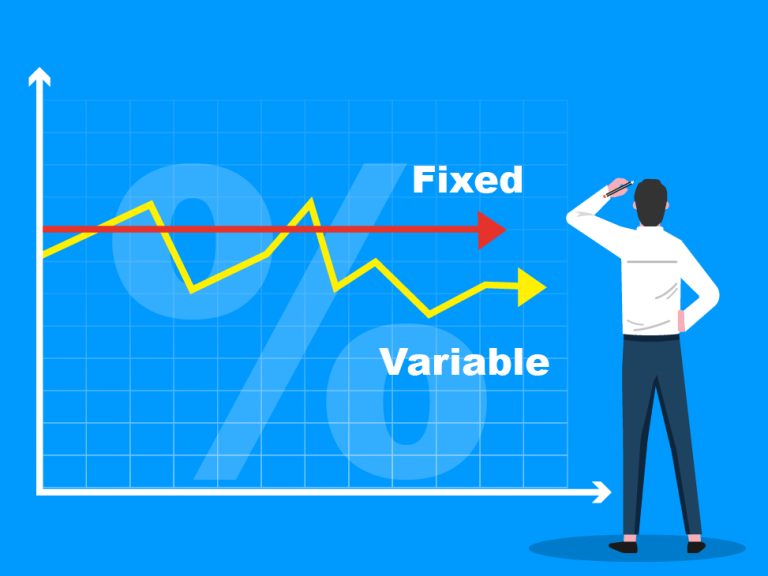Getting home loan is very BASIC now
Get a loan in under 5 mins

Are you planning to apply for a house loan soon? Then, you should be aware of both fixed-rate home loans and variable-rate home loans. Both types of loans have their pros and cons, as their names suggest. An individual can choose from one of these loan types depending on how he or she plans to repay the loan. In case, you plan to go for the home loan fixed interest rates option, you should have a good understanding of it, especially its benefits.
Table of Contents
An obvious benefit of a fixed-interest home loan is that the interest rate remains the same during the entire loan term or as long as the lender permits. Interest rates do not fluctuate as they do with variable interest rates. Let’s take an example and understand this. If tomorrow you decide on taking a home loan of ₹50 lakh from a bank or financial institution with a fixed interest rate of 9% for a period of 30 years, then your Equated Monthly Installment (EMI) will be ₹40,231. This will remain constant for the entire 30 years.
Some of the best fixed-rate home loans in India are offered by HSBC Bank, HDFC Bank, and Axis Bank.
| Bank | Fixed Rate | Processing Fee |
| HSBC Bank | – | 1% of the loan amount |
| HDFC | 7.40% p.a. to 8.20% p.a. | 0.5% of the loan amount |
| Axis | 12% p.a. | Up to 1% of the loan amount |
Suggested read: Top Banks for Home Loans in India
Ease in Repayment: As the interest rate on the loan amount is fixed for the entire loan period, it becomes easier for borrowers to plan their budget and pay the same monthly EMI for home loans.
The fixed-rate home loans or fixed mortgage rates loans offer a fixed rate of interest on the loan amount for the tenure of the loan, as agreed upon by the lender and borrower. The change in rate will not occur for this period. However, it may change after fixed intervals, usually two to three years, depending on the clauses in the loan agreement.
On the other hand, the floating interest rates fluctuate depending on the market conditions. A floating rate is attached to a base rate, so any change in the base rate affects the floating rate, which can either rise or fall. However, one of the highlights of the variable rate is that it is cheaper compared to fixed rates. So, even though the fixed rate remains stable throughout the loan tenure, the interest rate is kept higher by banks.
In India, the variable rates do not fluctuate consistently. This is because the Reserve Bank of India has instructed banks to keep their interest rates down. However, the catch is most banks offer lower interest rates to new customers and increase them later on, while their old customers continue paying the rate of interest set for them in the initial period and fail to enjoy the lower rates offered to new customers. Additionally, when the interest rates come down, the EMIs are kept the same, only the tenure of the loan is modified.
In the case of fixed-rate loans, there are certain terms and conditions like the Reset Clause, which is subject to revision. The clause is dependent on the decision taken by the bank, which comes into effect after the completion of the agreed fixed periods, and that might have an impact on the existing interest rate.
Suggested read: Home renovation loan options
Today, most borrowers are going for a combination of both fixed and variable interest rates while applying for a home loan, to get the benefits from both. Generally, in the first few years, the fixed rate of interest is opted and then, thereafter the variable rate is preferred.
The fixed home loan interest rates are fixed interest rates on a home loan that do remain constant during the loan tenure.
No. The interest rates do not change every year.
Yes, you can change your home loan interest rate from floating to fixed, and vice versa by intimating the bank and paying the requisite fee, if any.
The reason for choosing a fixed-rate home loan is that you can easily plan your monthly and yearly budgets.
Generally, banks can reset their fixed interest rates, maybe every two to three years. This clause may be included in the loan agreements to that effect.
Published on 28th July 2023